The Screaming Silence: An Interview with Michael Salerno
09.07.14
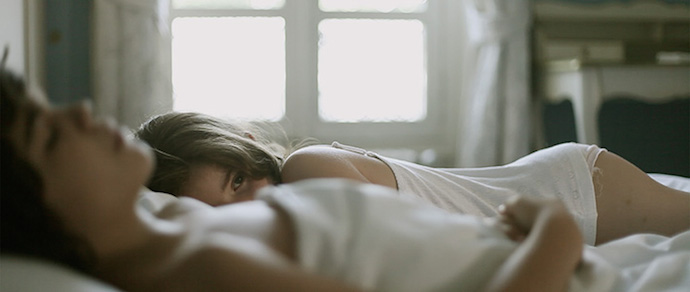
Michael Salerno is one of my favorite contemporary artists. He accesses parts of the soul and brain a lot of people spend time trying to do anything but encounter. His work feels pure, honest, and takes me to a very specific place that I don’t think any other artist does; one of epic –sometimes terrifying – proportions. He also runs Kiddiepunk, a Paris-based press that has released work by the likes of Dennis Cooper, Scott Treleaven, O.B. De Alessi, and Peter Sotos (with whom Salerno recently collaborated on the magnificent Home).
Salerno’s latest release is Silence, a film that examines the life of two young siblings and their family, as a huge storm approaches Paris. The film swells with a sense of dread and uncertainty, mixed with longing and many feelings that the viewer (and characters) will feel without ever being able to articulate. It’s a piece that gets under your skin to the point that you can physically feel something bubbling under, ready to overflow at any point. It feels heavy in the best possible way.
I spoke with Michael Salerno about Silence, and his obsessive approach to his work.
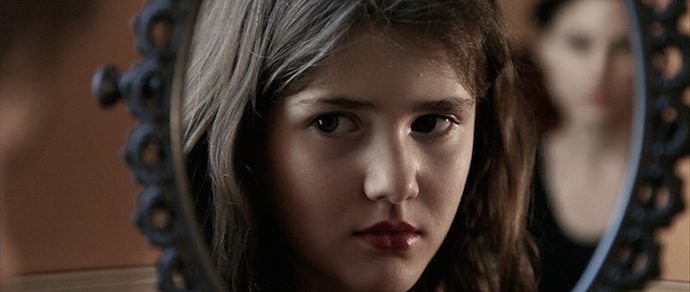
TM: I want to start off at the end and ask about how long the process of making Silence took.
MS: The whole process took a while, about three years from when I first had the idea and started writing, until completion. There were a couple of years of sporadic writing, just accumulating ideas, and then it was probably about a year, or a little more, of actual work with pre-production, shooting and editing.
I always think of your work as being really instinctive, which maybe sounds like an obvious thing to say, but when I’ve heard you talk about your stuff it always feel like you let the ideas lead you where they need to go. With that in mind I wanted to know how close the film has turned out in comparison to the original ideas, and what changes happened along the way?
I’ve worked a fair bit in the mode you described, where you start with an idea and then it morphs and shifts in an intuitive way, but with Silence, the idea dictated that things needed to be approached differently. It was the first “real” screenplay I’d written and I knew that in order to make the film work how I wanted it to, that we were going to have to stick to my original ideas very closely. I also had a somewhat strange constriction because the film is all in French, which, despite living in Paris for five years now, is a language I don’t actually speak, so it wasn’t really possible for the actors to improvise because I wouldn’t know what they were saying. We stuck extremely closely to the screenplay. The only differences between the screenplay and the finished film are that there were a few scenes that were cut out, and also, I cut some dialogue out of scenes too. There wasn’t much dialogue to begin with, but some of what was there, I chose to cut out during editing if I felt a scene was expressing what was needed without the words.
The moods in the film are so dead on that part of me thinks it was a case of them having to fit into characters that you had in place one hundred per cent. Or did they play a role in reshaping the parts that they were playing?
To be honest, there wasn’t really much space for the actors to go off on their own tangents, which is when it comes in handy to have cast the right people. I was after something very precise and I knew that the only way this film had a chance of working in the way I wanted it to was to keep a really tight grip on everything and never allow it to wander.
I was hyper-aware of the information that was being transmitted in the film. Everything in a film is a construction, and there is information everywhere – colour, sound, light, photography, acting, writing, movement, posture, and on and on – there are hundreds of little subliminal messages that are being transmitted, even without your knowledge. I was trying to be aware of all these things and to control them, to direct them to transmit in the way I wanted.
It was also an exercise in restraint. How much can I remove? How much can I withhold? What are the right things to supply? I know that the film is maybe a little difficult to acclimate to at the beginning, but I wanted it to start at a clear place, at a place of neutrality and then have the mood creep in slowly. I was after that sort of subtle, cumulative effect. I wanted to make a very gentle film and also to make a mysterious film, but I wanted to set up the mysteries in a different way, a way that allows all these threads to just linger in the air and for the viewer to not be told how they should interpret them, but to find their own place for them. Our brains want to connect things, to make sense of them, and the interesting thing about cinema is the way you can have all these different things going on, but the way you put them together can sometimes create a sensation of the ineffable.
I noticed that sometimes by removing things, you can set up the perfect conditions to create a kind of brain fire or misfire. Like, you have these two chunks of information and because of what’s missing in between them, your mind starts working, firing off all these intangible possibilities. Then the film begins to become something that also takes place inside you and becomes your thing. It mingles with you and exists somewhere in the space between the screen and you.
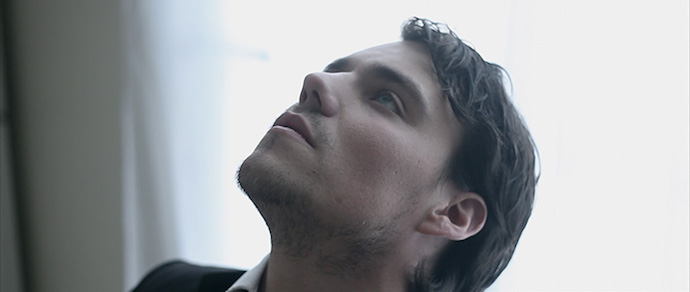
Do you ever create work that scares you?
That’s actually a hard question for me to answer. I’d have to say yes, sometimes I do. Sometimes, and it doesn’t happen very often, you can articulate something that feels like it has tapped into something very deep within a part of yourself that you normally don’t have access to. You’ve tapped a vein. It’s like when you have a really intense nightmare and you wake up petrified, but also like you’ve just come to see something that was previously hidden from you. I love that feeling.
In my own life, I’m pretty much scared of everything, to be honest. But when it comes to my art, oftentimes when I’ve done something that really scares me, I think I’ve only rarely shown those things to anyone. I don’t know. I have this obsessive interest in a very particular emotional/feeling world and fear is definitely present there. And it’s definitely present in Silence. It’s kind of like real life, where there’s all this darkness, always just lurking under the surface.
Your work often revolves around or features kids and teenagers prominently. With Silence, the children in the film are incredible – they play their roles in this way that just floored me and fits with the mood of the piece perfectly. Could you talk a little bit about what it is that draws children into your work, or what they might represent to you within your work?
I’m not sure why all of my work is focused on children, but every single idea I have revolves around two things: childhood and some sort of extreme weather or light condition. Together they create a mood, a tension, which is something I can’t seem to get away from. Both of these things just always arrive together for me, like two halves that make a whole. It’s something that exists outside of my ability to penetrate it intellectually, but I know that there is a certain pressure being imposed on the children in my work.
This is the case, quite literally, with my visual artwork and also the case with Silence. The central character of Silence, Marion, has all of these things being impressed on her and she’s at an age where everything is mysterious. She’s processing all this stuff, but as she’s still very much a child, she understands on a feeling level, on a body level. She’s just absorbing all these things. She knows something important is happening, but she doesn’t understand what it means.
How did you go about getting those performances from the child actors?
Working with kids is always an interesting experience and every kid is different so you have to find the right way for them to understand what they’re supposed to do and how to do it. Working with the kids in Silence was both thrilling and frustrating. The frustration came from the fact that both of them, Carla Ferrer-Casanova and Dylan Soultan, who play Marion and Alexandre in the film, spoke no English and so I was only able to communicate with them through an interpreter. As far as getting the work done, it was fine, but I would have loved to talk with them one-on-one in between shooting.
On the positive side though, I was excited to see how they brought these characters to life. Part of the reason for wanting to make a film, is to be able to spend time with these people in the world that you’ve created for them. Not “action” time, but actual time. I wanted to see them in their quiet moments, the moments where they’re inactive. By the time we started shooting, I’d been living with these characters for a couple of years, so it was a thrill to have them in front of me and I already knew that I’d found the exact right kids that I was looking for, so I wasn’t worried about them being able to do it. When you have the right people and put them in the right setting, in the right position, with the right light, most of the work is done. The rest is just fine-tuning.
I knew that the whole film was going to be carried on Marion’s shoulders. This is the first real acting job Carla had done and she was excellent. I’ve never seen a ten year old with so much focus. I would set her up in a scene – most of the time where there was no dialogue for her to lean on – and she had to just be right in the zone, and every time, take after take, she was always perfect. She was actually the most prepared and reliable person on the set. If I’d gotten caught up and forgot something, she would point it out to me and say, “In the screenplay, this is supposed to happen…”
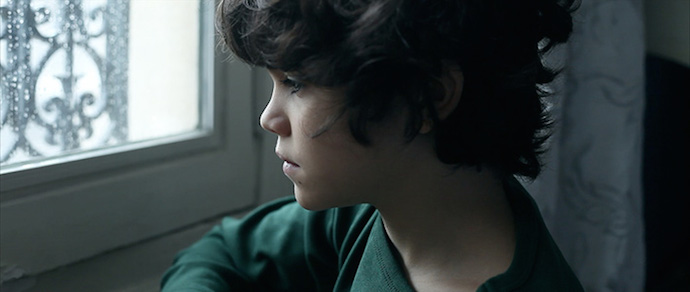
Would you say that your work acts in a cathartic way? With my own work, I’m not sure if creating work makes me feel better, but I’m convinced that I feel a lot worse if I don’t create stuff, if that makes any sense.
Well, I’ve never really felt like my work is cathartic. It’s more obsessive. I have this compulsion that I want to see and articulate certain things. And they’re pretty much always the same things that I want to see, over and over. I want to see them, and then I want to see them again and again. So that’s pretty much what I do every day. (laughs)
The music in the film is a really important element – again it feels like it has this restraint to it, so that it guides certain moods along without being too obvious or heavy-handed. Did you have any direction into what Marcus Whale created?
Marcus’s score for the film is really perfect and it’s so subtle, it just sits in there without drawing much attention to itself, which is what I wanted. The film is actually heavily scored, although you wouldn’t think so upon first viewing it. Apart from some of the more obvious elements to the score that are slightly more “musical,” Marcus made a whole lot of room tone-type sounds that actually run through the entire film. Before we started working on the score, I gave him a little list of things that I wanted him to think about. The film always has one eye on the sky and I wanted to hear that in the score. I wanted to hear what was going on with the light outside, mixed with the light inside each room. Also, most of the storm and general weather sounds that come off like natural sounds were actually created by Marcus too. He did a really beautiful job. We’ve worked together a lot over the years so we’re pretty easily able to just plug in in the right way.
While we’re on the subject of collaborations, are you ok to talk a little bit about your recent collaboration with Peter Sotos? You created Home, which was pretty astonishing. How did that collaboration come about, and what were the mechanics of it?
It came about fairly organically. I had been working on a series that combined images of sleeping children with tornado-destroyed landscapes. When I was done, there were quite a lot of them and I thought they should all be seen together within the context of a book. Peter is a friend of mine, so I showed him the work and asked if he’d be interested in writing some sort of text to accompany them. I was thrilled when he said yes and even more so when I read what he wrote. Taken together, the text and images create something that actually brings to the fore a certain thing that’s always been very present in my work, but which I was always slightly ambiguous about. With Home, I was in the mood where I didn’t want to hide those things anymore. I wanted to be explicit about what I was actually doing in a way that I never had been before.
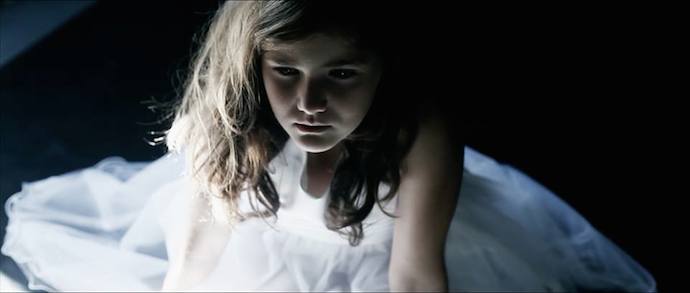
Do you get nervous about what people think? Does that matter to you?
No, I don’t find it hard to release things when I feel like they’re done. I like to show people my work and it makes me happy if somebody likes it or responds to it. I enjoy hearing from people, all that stuff. But ultimately, my favorite thing is actually doing the work, so I’m more focused on that.